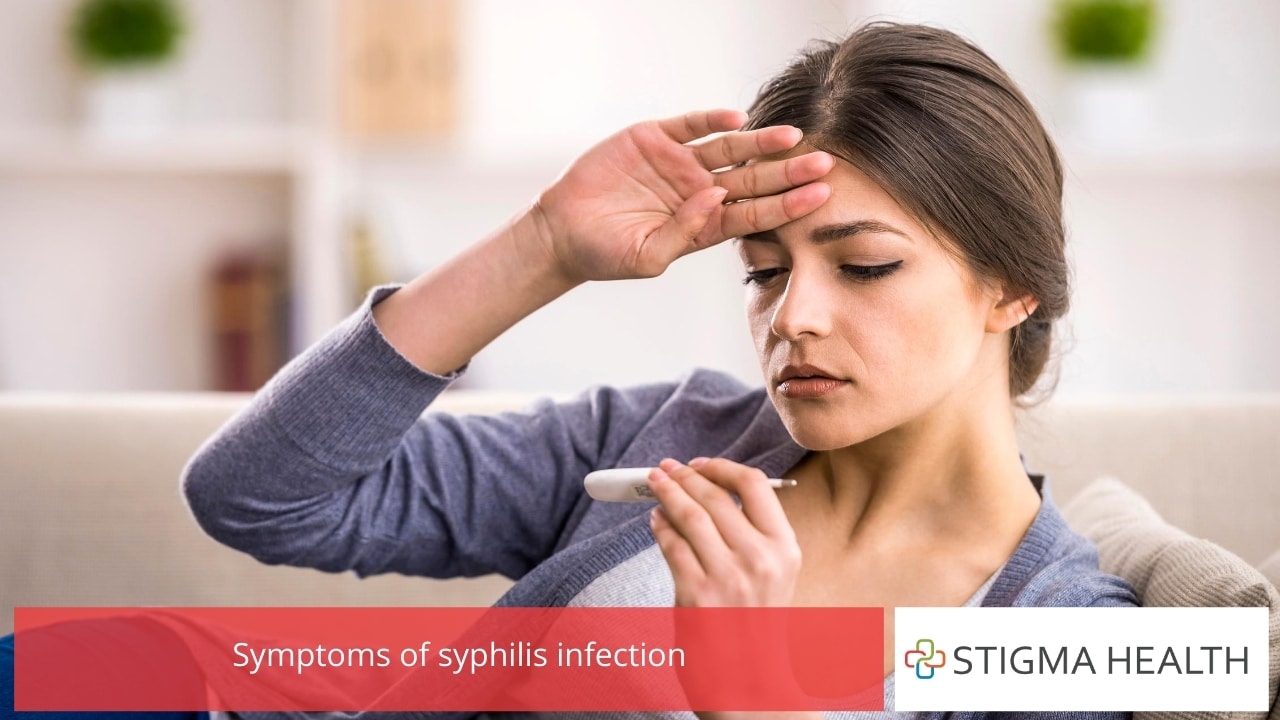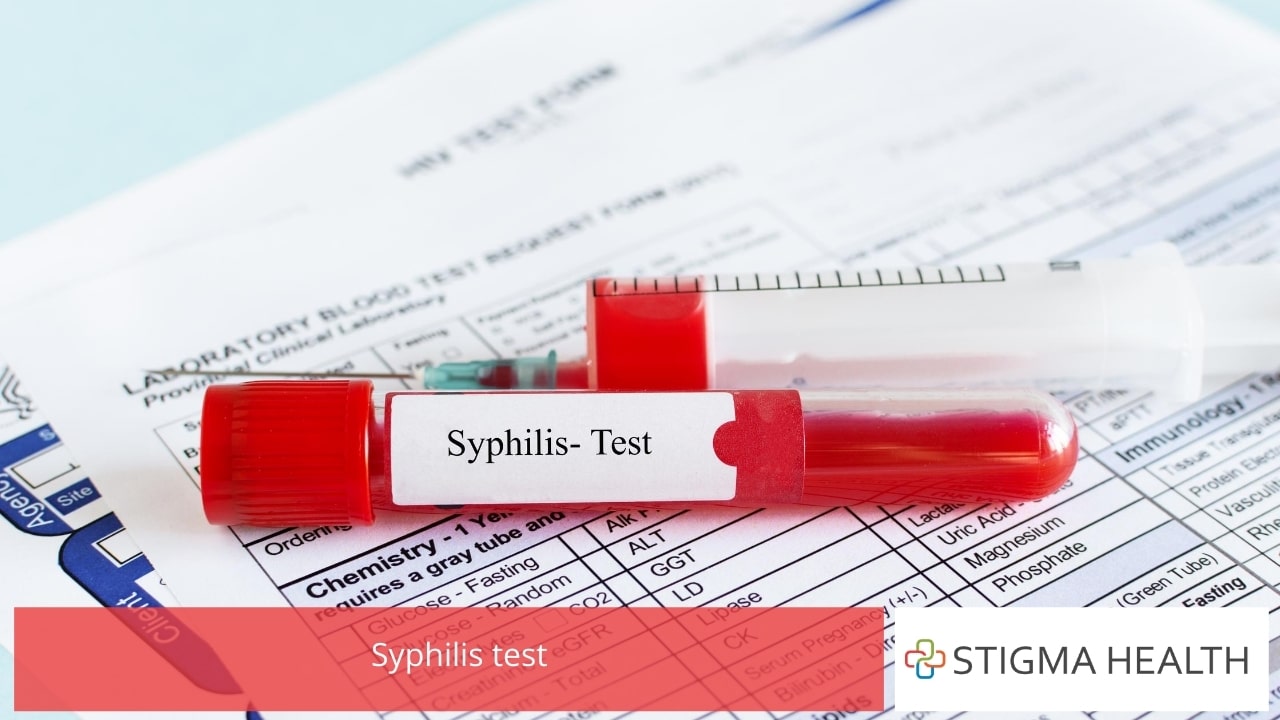All you need to know about Syphilis – A Sexually Transmitted Disease
Syphilis Testing
What Syphilis is
Syphilis is a bacterial infection caused by Treponema pallidum, subspecies pallidum. Syphilis is considered as one of the Sexually Transmitted Diseases (1).
In 2017, in Australia, there were 4398 notifications of infectious syphilis, with the majority, almost 85% of notifications in males. Between the years 2013–2017, the notification rate of infectious syphilis increased by 135% and reached a rate of 18.3 per 100 000 in 2017. This increase was much higher in females (309%), while the increase in males was 119%. According to the Australian national statistics, infectious syphilis notification rates were highest in people aged 25–29 years. Additionally, infectious syphilis notification rates were lower in the major cities and higher in remote and very remote areas. It is worth mentioning that the rate of notification of infectious syphilis in the Aboriginal and Torres Strait Islander population in 2017 was 6.6 times as high as in the non‑Indigenous population (2).
Considering the different areas of Australia, epidemiological data show that between 2013 and 2017, infectious syphilis notification rates increased in Queensland (208%), in Western Australia (280%), New South Wales (70%), Victoria (91%). These data also highlight that in the Northern Territory there is a more than 12‑fold increase in the notification rate of infectious syphilis. On top of that, the reports show that in 2017 the notification rate of congenital syphilis in the Aboriginal and Torres Strait Islander population was 27 times as high as the non‑Indigenous notification rate (2).

How do you get Syphilis?
Transmission of syphilis occurs during sexual contact with an actively infected partner. However, syphilis can also be transmitted via vertical transmission during pregnancy. Studies have shown transplacental passage of the syphilis bacterium to the fetus, as early as 9–10 weeks of gestation. Moreover, mother to child transmission of syphilis can also occur during the time of delivery (3).
Are you at risk for syphilis?
Sexual contact with an infected person increases the risk of syphilis infection. Additionally, like all the Sexually Transmitted Infections, having multiple partners, or being a sex worker increases the risk for syphilis infection. People who inject drugs are a group of people with a high risk of syphilis infection. The epidemiological data highlight that there are geographic differences of syphilis infections in Australia.
The risk for syphilis is low for heterosexuals in all major cities in Australia and New Zealand, however, rates of syphilis are higher among males who have sex with males. Therefore, they should be screened for syphilis every 12 months. According to the guidelines, screening for syphilis is recommended to every pregnant as part of the routine antenatal screening for Sexually Transmitted Diseases. Young Aboriginal and Torres Strait Islander peoples have higher infection rates especially in regional and remote areas, with a substantially increased risk in syphilis (4).

Symptoms of syphilis infection
Almost half of the people with syphilis have no symptoms. However, among the ones with the symptoms, we can categorize syphilis into 3 groups depending on the symptoms.
Primary syphilis: According to the WHO definition, primary or ‘early syphilis’ is the infection of <2 years duration (5).
It is possible that patients present with a painless ulcer on the penis or vagina that usually is non-tender, with a well-defined margin with an indurated base. However, depending on the area that it appears, it can remain unnoticed especially if it is on the anal skin, in the mouth or the cervix. The incubation period is between 10 days to 3 months and in 1/3 cases there may be multiple chancres that may spontaneously heal within a few weeks. Another symptom that is often noticed is that inguinal lymph nodes are usually enlarged.
Secondary syphilis: The patient may experience symptoms like headache, fever, malaise, and lymphadenopathy. Most cases are characterized by a generalized rash involving the trunk; however, the rash may be only limited to the palms and soles. Additionally, the patient may notice alopecia and condylomata lata. In some cases, there is the involvement of the nervous system, and infected people may experience neurological signs of cranial nerve palsies, meningitis, and ophthalmic signs. The incubation period could be longer compared to primary syphilis 2-24 weeks.
Tertiary syphilis: In cases that syphilis remains untreated, in 1/3 cases it may lead to late symptoms and complications.
In relation to the infection time, syphilis can be categorized into two types:
Early Latent (<2 years) syphilis: Early latent implies recent infection and it is treated as infectious syphilis. Some people might not experience any symptoms and will only be diagnosed by blood tests. If untreated, people become asymptomatic over a period of 12 years after the infection.
Late latent (>2 years) syphilis: Two years after the infection people are not considered anymore infectious to their sexual partners, however in case of pregnancy, females may still transmit the infection to the fetus (6).
Complications of untreated syphilis
Complications include skin lesions called gummas, cardiovascular problems like an aneurysm, damage of the heart valves, or neurological related complications like hearing/vision loss, brain damage, paralysis, and others. Moreover, untreated syphilis can increase the chance of getting an HIV infection.

Syphilis test
The diagnosis of syphilis depends on several factors including clinical examination and its findings, examination of lesion material, and blood tests for syphilis. The blood tests (serologic) are the main way of laboratory diagnosis for different types of syphilis such as the secondary, latent, and tertiary syphilis. The serologic tests are categorized into treponemal and non-treponemal, however, neither alone is sufficient for diagnosis. Non-treponemal tests are useful for screening, while treponemal tests are used as a confirmation tool. Treponemal tests have higher sensitivity and specificity than the non-treponemal tests. Serologic screening done at the first antenatal visit is the usual method of syphilis diagnosis during pregnancy (7).
Treatment for syphilis
Benzathine penicillin remains the recommended first-line therapy for syphilis. In studies comparing penicillin with nonpenicillin regimens, it was concluded that a single intramuscular injection of 2.4 million U of BPG is ideal for early syphilis treatment. In cases of penicillin-allergic patients, ceftriaxone treatment of syphilis may be useful, but it is more expensive and requires multiple daily parenteral doses (8).
Generally, according to a 2017 study published in “THE LANCET”: “only one drug, penicillin, is recommended for syphilis treatment and response to therapy is assessed based on changes over months in serological test titers” (9).
Take away message
Syphilis like many other Sexually Transmitted Infections can be asymptomatic, thus we must be aware and test if there is suspicion that we might be exposed to syphilis. Penicillin can totally treat the disease and avoid any kind of complications.
References
- nhs.uk. 2020. Syphilis. [online] Available at: <https://www.nhs.uk/conditions/syphilis/> [Accessed 4 August 2020].
- Kirby.unsw.edu.au. 2019. HIV, Viral Hepatitis And Sexually Transmissible Infections In Australia: Annual Surveillance Report 2018 | UNSW – The Kirby Institute For Infection And Immunity In Society. [online] Available at: <https://kirby.unsw.edu.au/report/hiv-viral-hepatitis-and-sexually-transmissible-infections-australia-annual-surveillance> [Accessed 4 August 2020].
- Peeling, R., Mabey, D., Kamb, M., Chen, X., Radolf, J. and Benzaken, A., 2017. Syphilis. Nature Reviews Disease Primers, 3(1).
- Racgp.org.au. 2020. RACGP – Guidelines For Preventive Activities In General Practice. [online] Available at: <https://www.racgp.org.au/clinical-resources/clinical-guidelines/key-racgp-guidelines/view-all-racgp-guidelines/red-book> [Accessed 4 August 2020].
- World Health Organization. 2016. WHO Guidelines For The Treatment Of Treponema Pallidum (Syphilis). [online] Available at: <http://www.who.int/reproductivehealth/publications/rtis/syphilis-treatment-guidelines/en/> [Accessed 4 August 2020].
- User, S., 2018. Syphilis – Australian STI Management Guidelines. [online] Sti.guidelines.org.au. Available at: <http://www.sti.guidelines.org.au/sexually-transmissible-infections/syphilis> [Accessed 4 August 2020].
- Singh, A. and Romanowski, B., 1999. Syphilis: Review with Emphasis on Clinical, Epidemiologic, and Some Biologic Features. Clinical Microbiology Reviews, 12(2), pp.187-209.
- Clement, M., Okeke, N. and Hicks, C., 2014. Treatment of Syphilis. JAMA, 312(18), p.1905.
- Hook, E., 2017. Syphilis. The Lancet, 389(10078), pp.1550-1557.
Syphilis FAQs
Some people mistakenly think of Syphilis as a disease of the past, but it is not. In fact, the number of cases currently being diagnosed in Australia is on the rise. Syphilis was a very serious problem until an effective treatment, Penicillin, was developed in the 1940s, but it is still a serious concern today.
Syphilis develops in stages. The first two stages, which involve sores and a rash, will resolve themselves and can go unnoticed, but the infection will still be present and will continue to develop. If left untreated Syphilis can become an extremely serious condition that can affect the heart, brain, spinal cord and nerves potentially causing paralysis, blindness, dementia, deafness and as the history books should have taught you it can even result in death.
Ok this one involves a needle, but that is nothing compared to what can happen if you have been infected by Syphilis and leave it untreated. A blood test will show whether a person has the antibodies produced in response to the presence of the infection. Your Stigma Health Pathology Referral will allow you to have a blood test performed at the Pathology centre of your choice.
Today we still treat Syphilis with Penicillin, but unfortunately you’ll need to be injected with it for the treatment to be effective. Usually, this is done only once a week over three weeks. If you are allergic to Penicillin don’t despair, effective alternatives are available.their site either with your name or anonymously.
